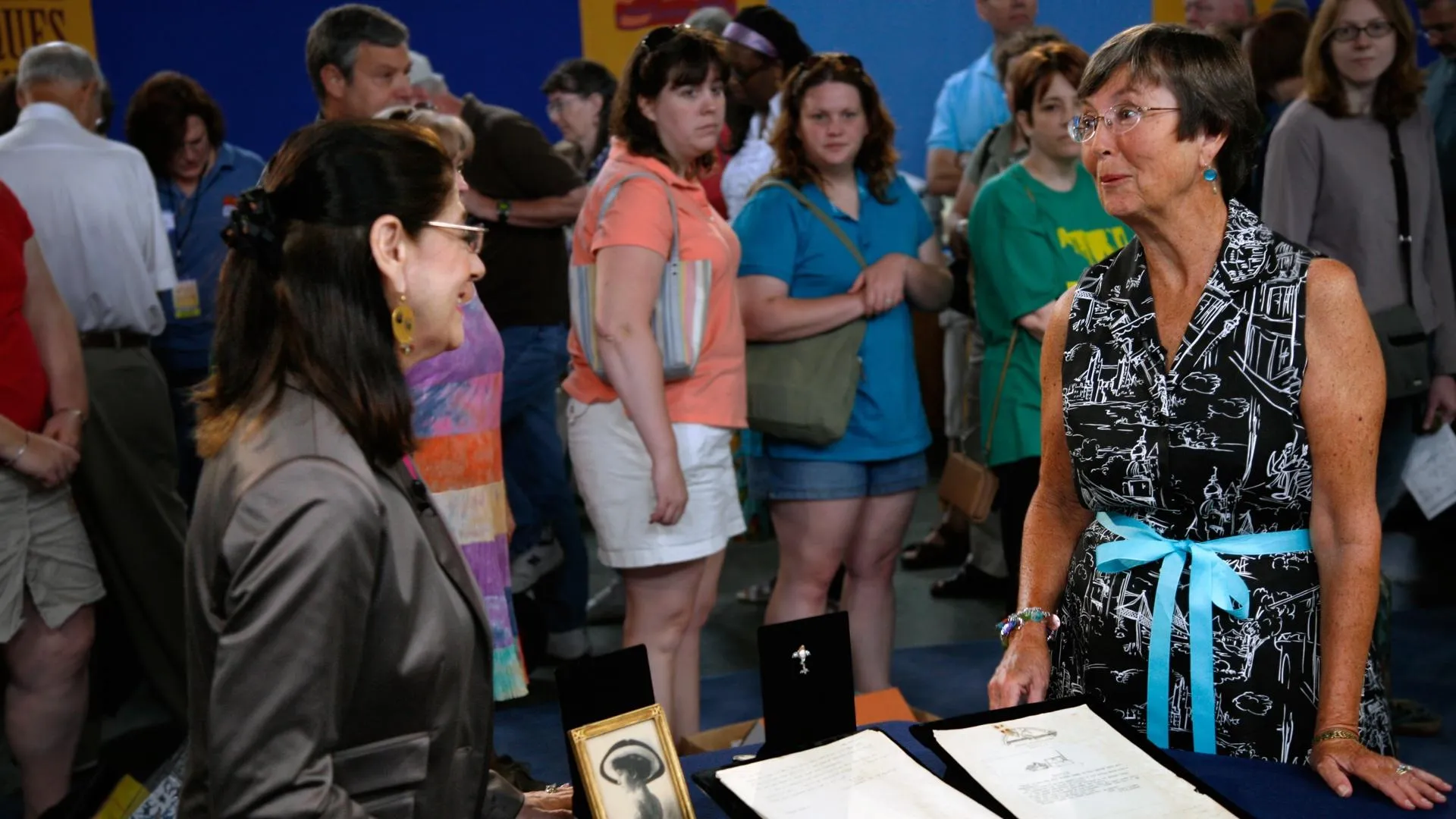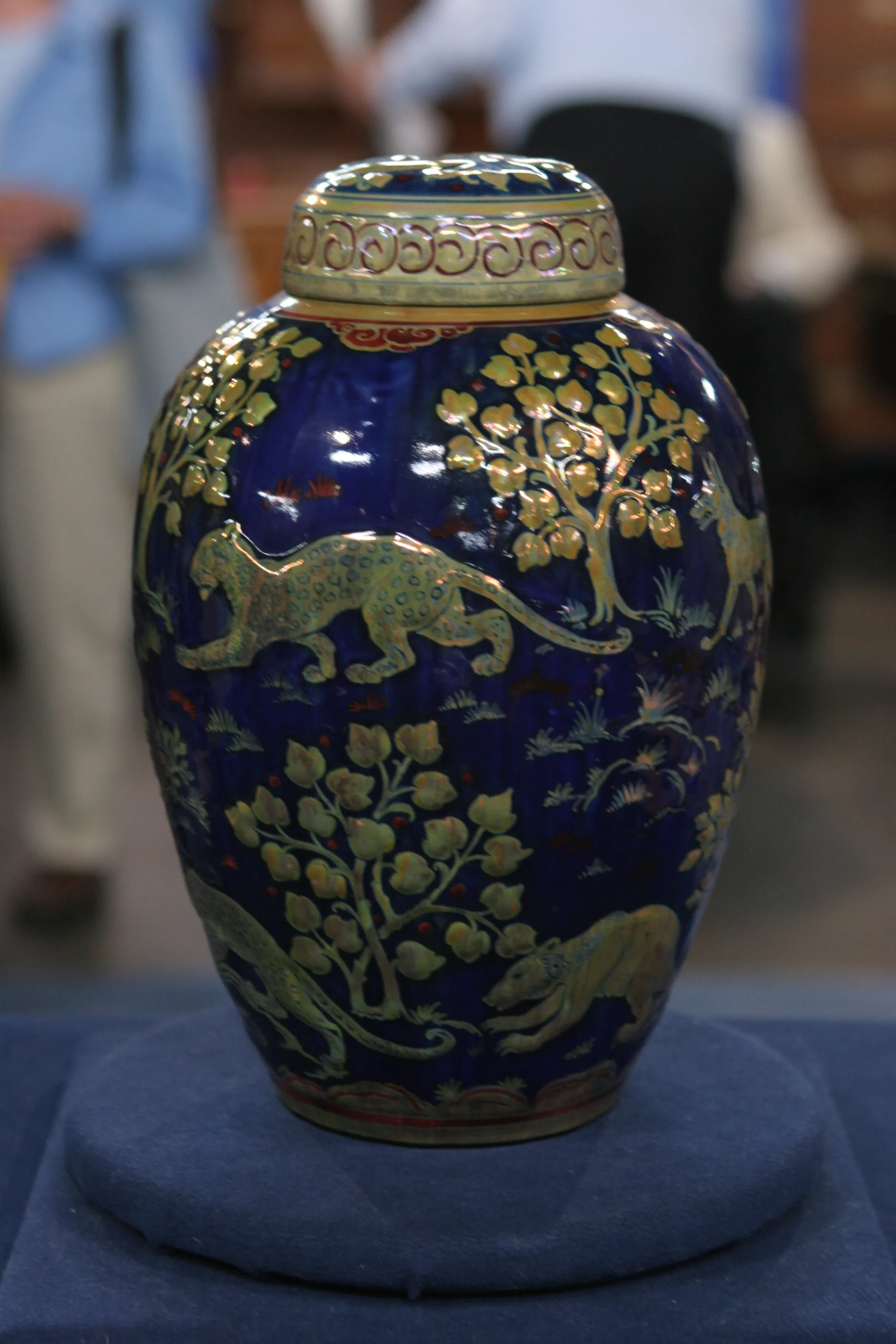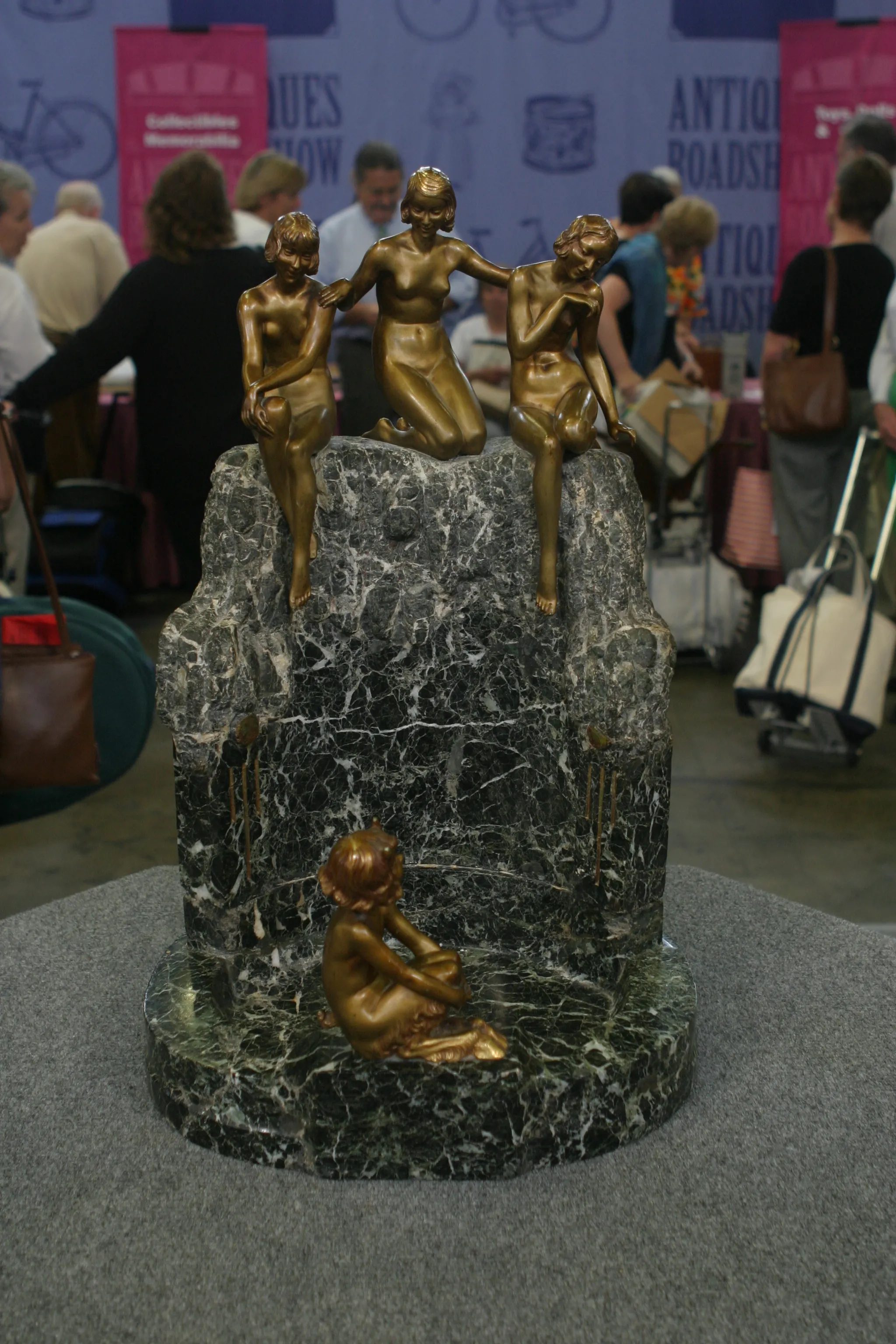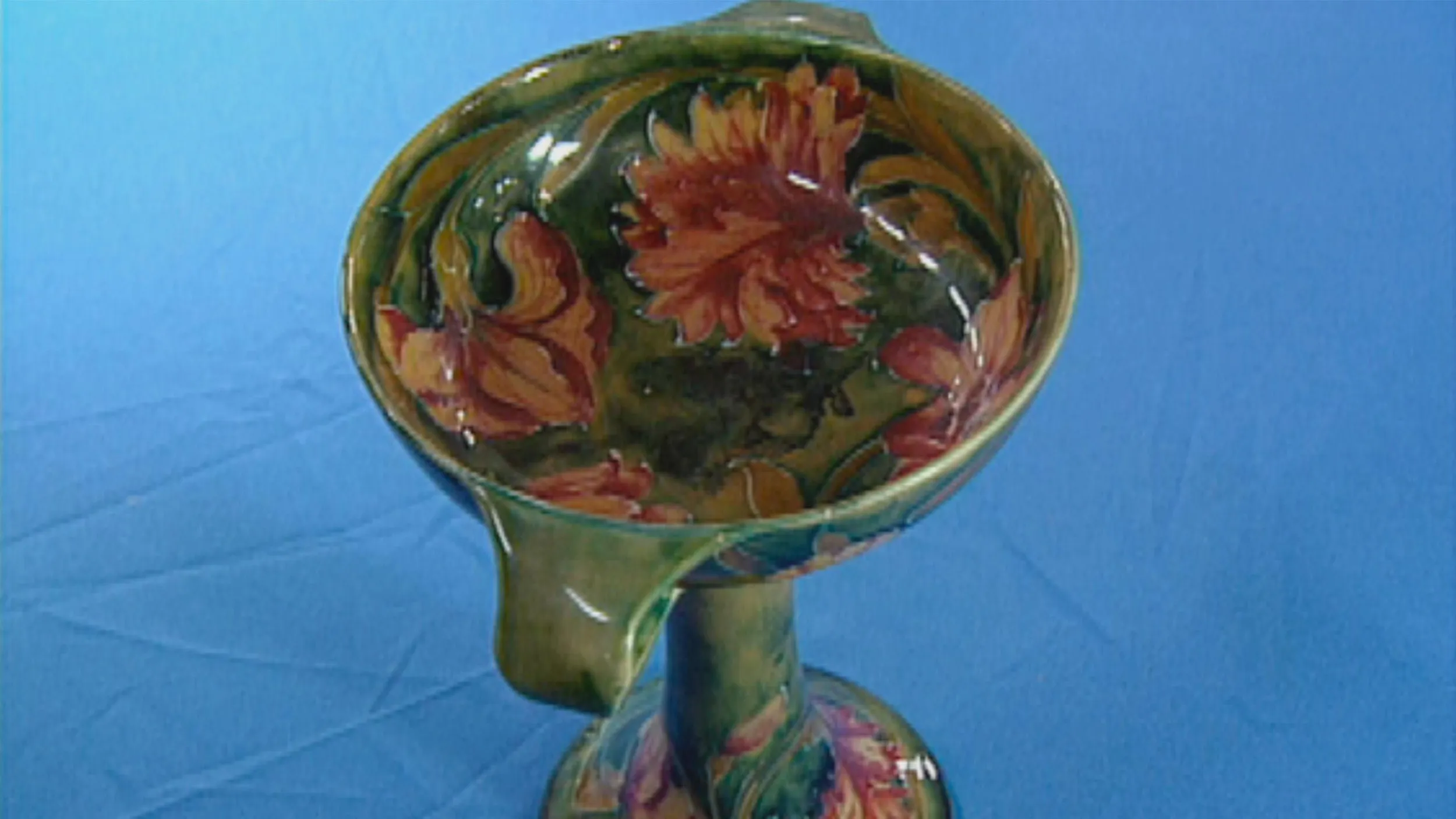GUEST: It was my late husband's, and it was a particular treasure of his. He was a graphic artist and he collected a lot of posters. This is the most interesting, I think. Being from the Bridgeport area, where Barnum had his museum and the circus had its winter headquarters and everything, there was local interest, but we both really loved the headline, so typically Barnum. I think, from my research, that Jumbo was killed in 1885. Hit by a train. And Jumbo the elephant was a big star of the circus, and it was a horror that he was killed. And so Barnum had to do something to rescue the circus, and he came up with this story that Jumbo had sacrificed himself and thrown this elephant out of the way of the oncoming train to save its life.
APPRAISER: It's a great headline. And this may come as a surprise to you, but for some reason, I'm very partial to images of men dressed as clowns.
GUEST: (laughing)
APPRAISER: I don't know what it is, but it really, it resonates with me.
GUEST: Yes.
APPRAISER: P.T. Barnum was considered the world's greatest huckster. And early circus posters are a wonderful window into the history of American advertising. The circuses would travel from town to town, and as they were moving from town to town, an advance team of advertisers would be in the next town hanging up posters. And the circuses in America really revolutionized poster art in America.
GUEST: Oh.
APPRAISER: And revolutionized advertising art. The poster was printed by one of the great American lithographers, the Strobridge Company, which was based in Cincinnati. And their name appears on all the posters that they printed, and they really are the gold standard for American turn-of-the-century commercial lithography. Now, on most early circus posters, not only does it say Strobridge, but it has the date of the poster.
GUEST: Oh!
APPRAISER: This series, with the two cameos-- the two very desirable cameos, from the point of view of circus collectors-- these were never dated. But they date to approximately the early 1890s.
GUEST: Really?
APPRAISER: So it was a little bit after Jumbo died. Now, you mentioned the headline. The headline is great. You've got to imagine a man standing outside the big top going, "The original, famous, and only "diminutive, dwarf "clown elephant, Tom Thumb, "to save whom Jumbo so nobly sacrificed his own life. Inimitable displays of elephantine intelligence."
GUEST: (chuckles)
APPRAISER: This would've really excited people, along with all the great vignettes of the elephant playing music, the elephant bicycling, the elephant
ordering drinks. This would have really excited people to come and visit. The circus posters from the '30s and '40s, which were printed in much larger numbers, tend to sell in the $200, $300, $400 range. At auction, I would estimate its value at between $2,000 and $3,000, and it's in very good condition, too. The colors are still bright. So it wouldn't surprise me if it would sell closer to the high end of that rather than the low end.
GUEST: Great. Great-- my husband would be very pleased.
APPRAISER: I need a pair of red-striped pants.
GUEST: (laughing)
APPRAISER: That would be perfect.









